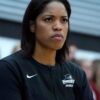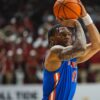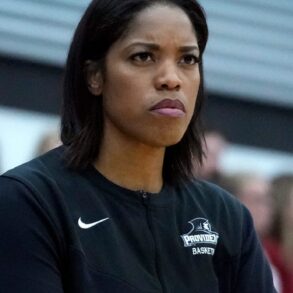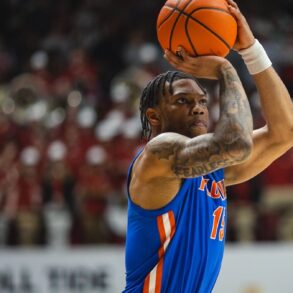PISCATAWAY – It’s a question that is burning a hole in the stomach of every Rutgers basketball fan – and perplexing onlookers across the college hoops landscape.
What has happened to the most highly anticipated Scarlet Knights team in modern times?
At 8-8 overall and 1-4 in the Big Ten after Thursday’s 68-50 loss to No. 20 Purdue, Rutgers has reached the season’s halfway point with its NCAA Tournament hopes on a respirator. This with Dylan Harper and Ace Bailey, two surefire NBA Draft lottery picks.
The answer, as with a lot of life’s thorny questions, is not one simple thing. It’s messy multitude of factors, starting with culture.

The most obvious issue is that head coach Steve Pikiell, seizing an opportunity to coach once-in-a-generation talent as free agency turned the sport’s conventions upside down, tried to speed-install his defense-and-toughness culture, the kind that Geo Baker, Ron Harper Jr., Caleb McConnell and Myles Johnson matured into over a couple of years as the program rose from the ashes.
That culture has failed to take hold to date, partly because it has to marinate over a longer period. For example: When the aforementioned cornerstones arrived on the banks, Pikiell and his assistants spent summers focused on individual instruction, building up their fundamentals before installing team defensive principles. By their second year together, the principles sunk in and hardened enough to win 20 games.
This past summer, knowing the window was short because he was embracing two one-and-dones and bringing in a total of nine new scholarship players, Pikiell pared back individual instruction and went straight to team defense. He bet on being able to install the foundation without a whole lot of excavation, and the concrete hasn’t hardened in time.
Purdue coach Matt Painter, one of the deans of the sport, put his finger on it.
“Rutgers has always had a great defensive foundation,” he said. “What (Pikiell) got from Coach (Jim) Calhoun was that toughness, that nastiness, that ability to rebound. They’ve been one of the toughest teams for us to go against.
“Now you don’t have the build-up as much. So I think what a lot of (coaches) are doing that are getting it figured out, besides just getting really talented guys, is they’re finding those guys in the portal who have those winning qualities. Because you don’t have the time to instill them…because you might lose them in the spring.”

As talented and productive as they are, Harper and Bailey play defense like most other freshmen. There are no defensive stoppers to surround them with. Three possible candidates – Cliff Omoruyi, Mawot Mag and Derek Simpson – took the free-agent route out of town last spring. For the first time since Pikiell’s earliest years here, the Scarlet Knights have no defense-and-rebounding center. They desperately needed Omoruyi or someone similar against Purdue, which destroyed them on the pick-and-roll while racking up 38 points in the paint.
Which brings us to Rutgers’ failure to bring in transfers who could best plug the holes, starting with center. Some of it was the NIL war chest, or lack thereof. Some of it was the sad truth that many potential impact transfers wanted no part of sharing an offense – and shots – with two high-usage freshmen. In a landscape that rewards individual production – not team victories – with NIL paydays each spring, can you blame them? And some of it was a combination of evaluation and usage, trying to fit square pegs into round holes – asking spot-up shooters to shoot without their teammates setting screens, for example.
Throw in some bad luck – especially Harper’s awfully timed flu and the broken foot that set high-scoring transfer Tyson Acuff back four months – and the stew of disappointment is boiling over.
A moment on Thursday summed it up. Rutgers pulled within five of Purdue midway through the second half, was starting to heat up offensively, and desperately needed a stop. But no one could prevent the Boilermakers’ guards from having their way. There was no stopper, no run-through-the-brick wall program veteran to spearhead a connected defense where everyone knew their part and the part of the guy next to him. There was no McConnell, a three-star recruit who Pikiell molded into a two-time Big Ten Defensive Player of the Year.
“Caleb McConnell when he first started, he didn’t put fear in you,” Painter said. “Year two you were like, ‘Oh, he’s going to be good. Year three: You’d better be careful dribbling around him. When that ball was loose, those guys were coming.”
Steve Pikiell built his program on guys like that. Heck, he built those guys. You can’t rent that, you can’t microwave it, and you can’t slap it together and speak it into existence.
“The landscape, it’s not something any of us created, but here it is,” Painter said. “The ones that can adjust on a year-to-year basis are the ones that are going to be more successful.”
Pikiell has struggled to adjust, cobbling together a group that, as Bailey noted multiple times after the Purdue loss, is “not connected” on the court.
“We can do way better than what we’re doing,” Bailey said.
He’s right, and that starts at the top. Pikiell doesn’t have three years to build this foundation. He had eight months. That’s a big adjustment. He’s not the only coach trying to figure this out, but at 8-8 with two generational talents, it’s hard to imagine a bigger disappointment.
Jerry Carino has covered the New Jersey sports scene since 1996 and the college basketball beat since 2003. Contact him at jcarino@gannettnj.com.
This post was originally published on this site be sure to check out more of their content.









